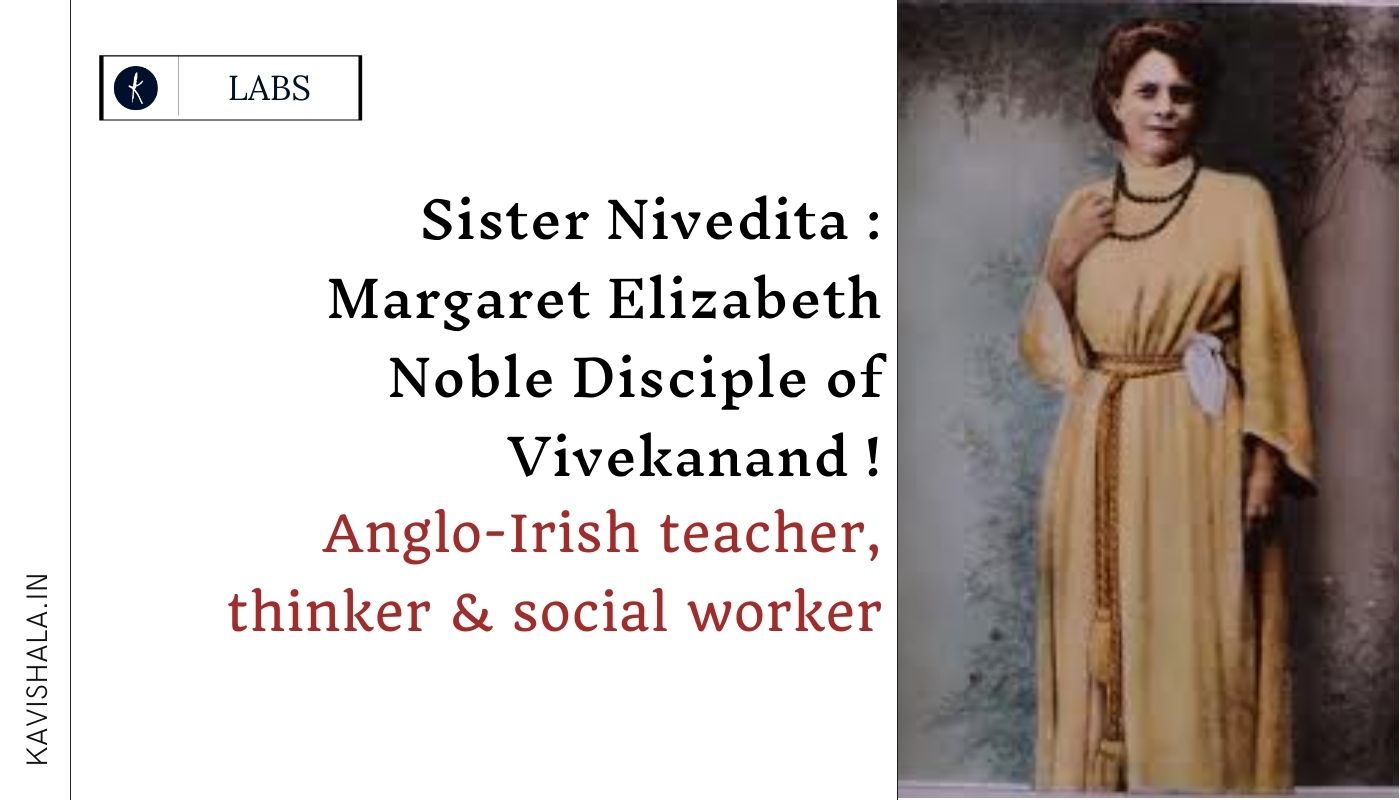
Sister Nivedita : Margaret Elizabeth Noble Disciple of Vivekanand !
 October 14, 2021
October 14, 2021“It is well known how the monks wrote silly lives of Catholic Saints over the manuscripts on which the classical works of ancient heathendom had been written.”
― Karl Marx
Primarily born as Margaret Elizabeth Noble,150 years ago today, in Northern Ireland she was more popularly known as sister Nivedita. Being an Anglo-Irish teacher, thinker, social worker, and the disciple of Swami Vivekananda in the year 1895 in London. Swami Ji started calling her by the name "Nivedita" a niche for herself in the arena of spirituality.
She stepped into this world on the 28th of Oct, 1867. Seeing her mankind and dedication towards public welfare Swami Vivekananda wrote a poem to Sister Nivedita, which was A benediction to Sister Nivedita. In his poem, Vivekananda had condensed all his hopes, aspirations, and good wishes for his disciple, Nivedita as –
The mother's heart, the hero's will
The sweetness of the southern breeze,
The sacred charm and strength that dwell
On Aryan altars, flaming, free;
All these be yours and many more
No ancient soul could dream before-
Be thou to India's future son
The mistress, servant, friend in one.
No posts
No posts
No posts
No posts
Comments